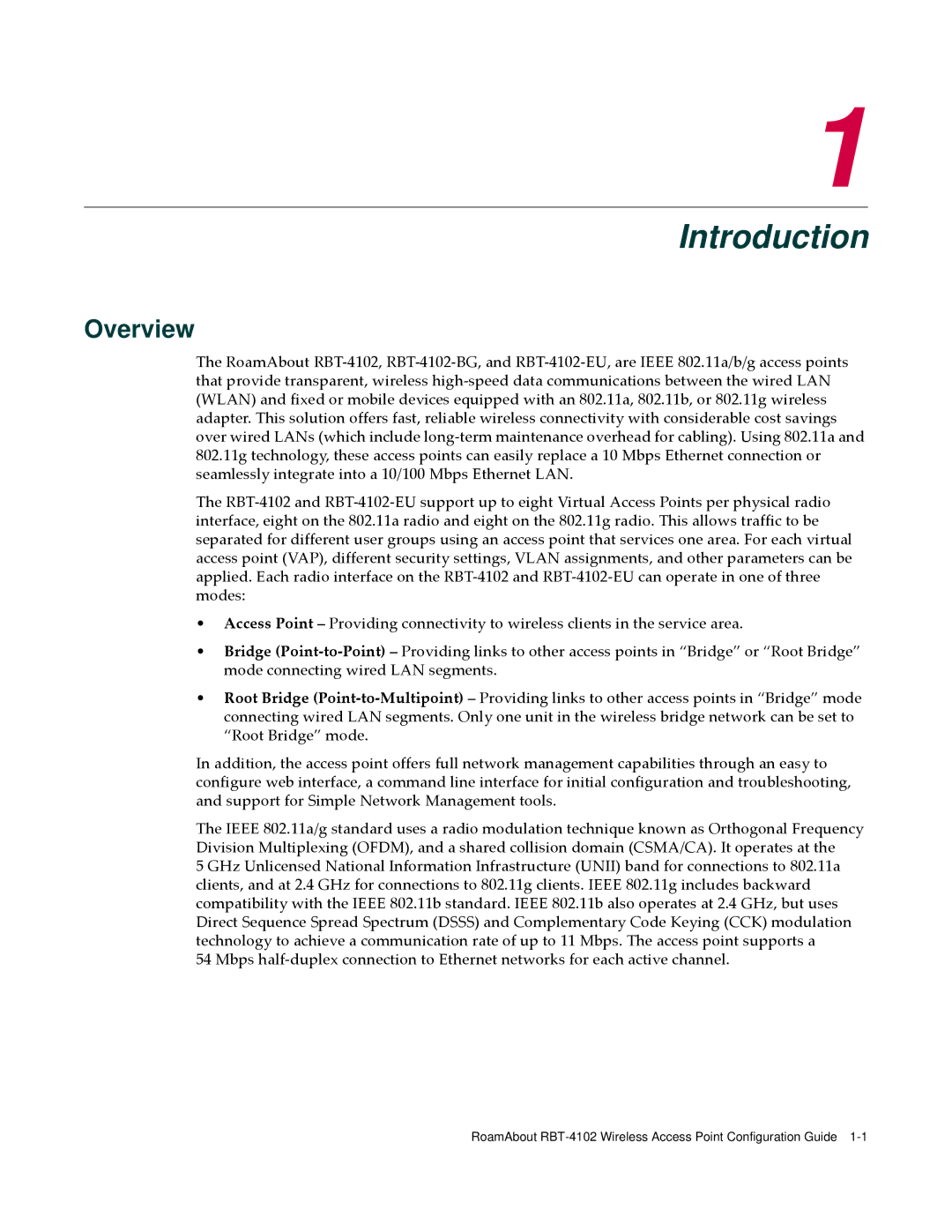1
Introduction
Overview
The RoamAbout RBT‐4102, RBT‐4102‐BG, and RBT‐4102‐EU, are IEEE 802.11a/b/g access points that provide transparent, wireless high‐speed data communications between the wired LAN (WLAN) and fixed or mobile devices equipped with an 802.11a, 802.11b, or 802.11g wireless adapter. This solution offers fast, reliable wireless connectivity with considerable cost savings over wired LANs (which include long‐term maintenance overhead for cabling). Using 802.11a and 802.11g technology, these access points can easily replace a 10 Mbps Ethernet connection or seamlessly integrate into a 10/100 Mbps Ethernet LAN.
The RBT‐4102 and RBT‐4102‐EU support up to eight Virtual Access Points per physical radio interface, eight on the 802.11a radio and eight on the 802.11g radio. This allows traffic to be separated for different user groups using an access point that services one area. For each virtual access point (VAP), different security settings, VLAN assignments, and other parameters can be applied. Each radio interface on the RBT‐4102 and RBT‐4102‐EU can operate in one of three modes:
•Access Point – Providing connectivity to wireless clients in the service area.
•Bridge (Point‐to‐Point) – Providing links to other access points in “Bridge” or “Root Bridge” mode connecting wired LAN segments.
•Root Bridge (Point‐to‐Multipoint) – Providing links to other access points in “Bridge” mode connecting wired LAN segments. Only one unit in the wireless bridge network can be set to “Root Bridge” mode.
In addition, the access point offers full network management capabilities through an easy to configure web interface, a command line interface for initial configuration and troubleshooting, and support for Simple Network Management tools.
The IEEE 802.11a/g standard uses a radio modulation technique known as Orthogonal Frequency Division Multiplexing (OFDM), and a shared collision domain (CSMA/CA). It operates at the
5 GHz Unlicensed National Information Infrastructure (UNII) band for connections to 802.11a clients, and at 2.4 GHz for connections to 802.11g clients. IEEE 802.11g includes backward compatibility with the IEEE 802.11b standard. IEEE 802.11b also operates at 2.4 GHz, but uses Direct Sequence Spread Spectrum (DSSS) and Complementary Code Keying (CCK) modulation technology to achieve a communication rate of up to 11 Mbps. The access point supports a
54 Mbps half‐duplex connection to Ethernet networks for each active channel.
RoamAbout
